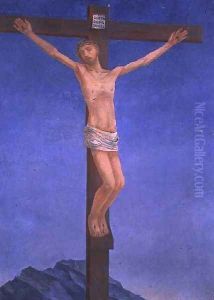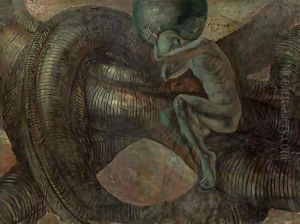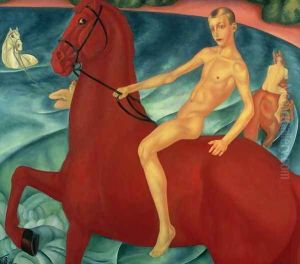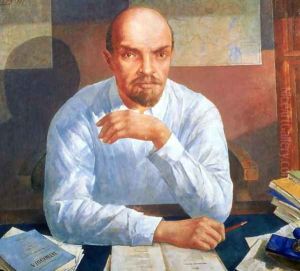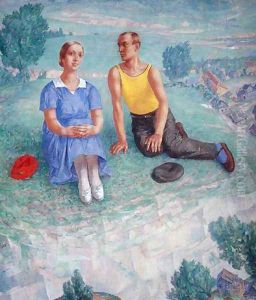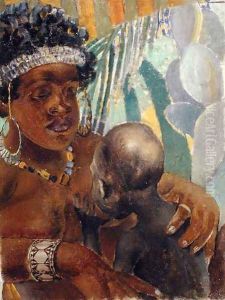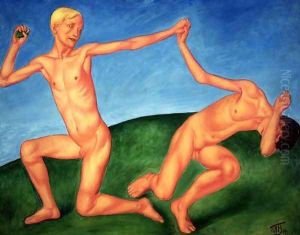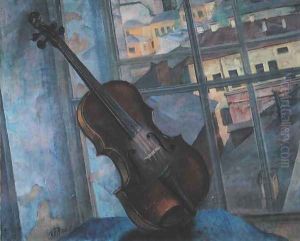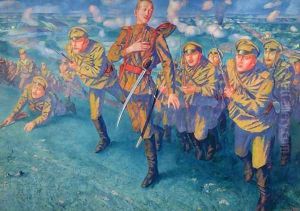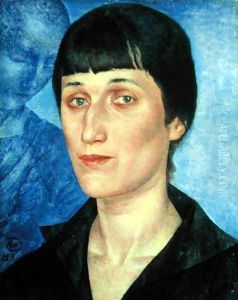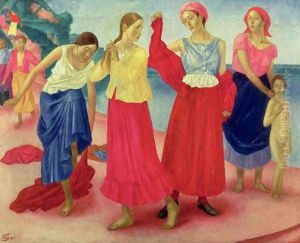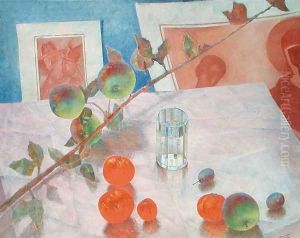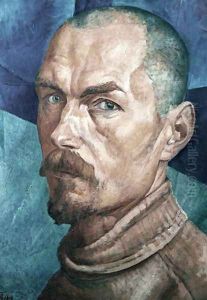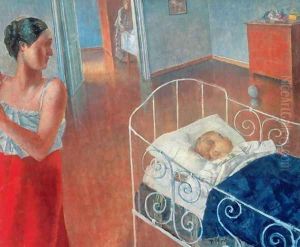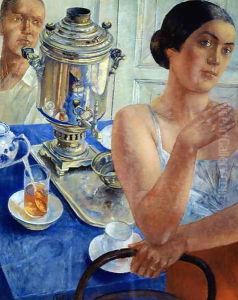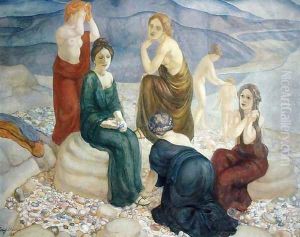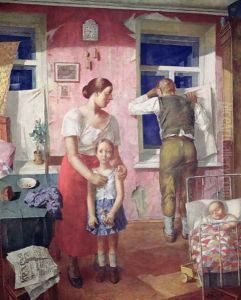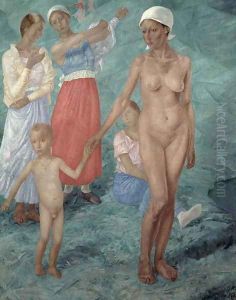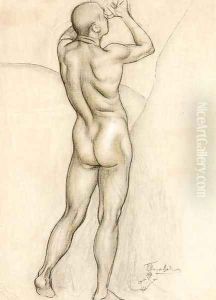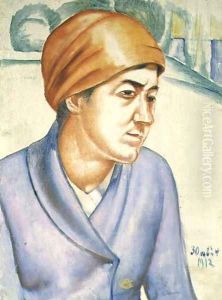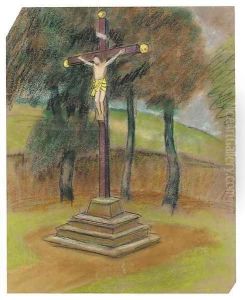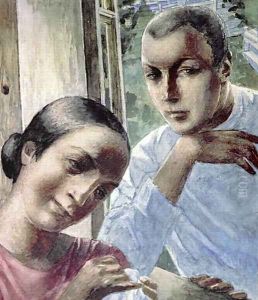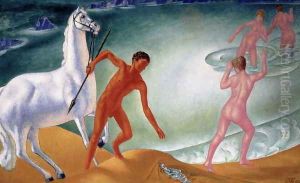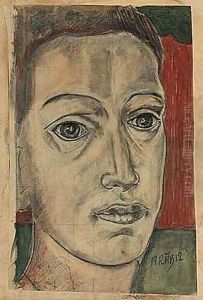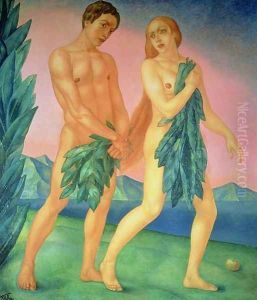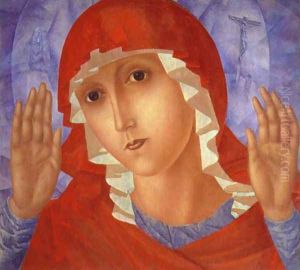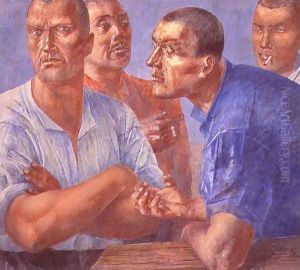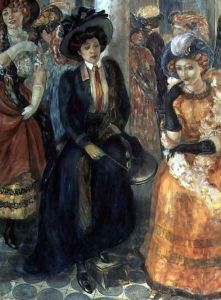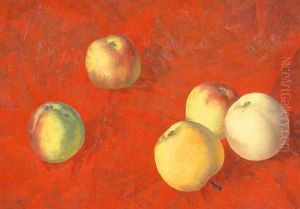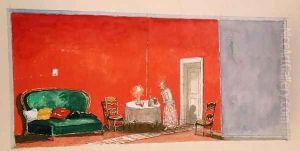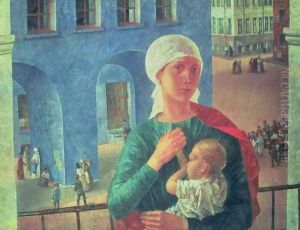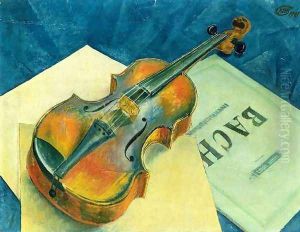Kuzma Sergeevich Petrov-Vodkin Paintings
Kuzma Sergeevich Petrov-Vodkin was a prominent Russian and Soviet painter and writer. Born on November 24, 1878, in Khvalynsk, Saratov Governorate, Russian Empire, he grew up in a working-class family which could not afford a formal education for him. Despite this, Petrov-Vodkin's talent for art was recognized early on, and he began his studies at the local art school with the support of a local patron.
His early works were influenced by the Old Masters, as well as contemporary Russian realists and symbolists. In 1897, he moved to Samara, where he continued his education and began teaching art himself. His quest for professional training led him to St. Petersburg, where he attended the Baron Stieglitz's Central School of Technical Drawing. Later, he studied at the Higher Art School at the Imperial Academy of Arts, studying under such artists as Jan Ciągliński.
Petrov-Vodkin's style evolved significantly over the years. After a trip to Paris in 1906, where he was exposed to the works of the post-impressionists, his palette became brighter and his use of form more rounded. This is particularly evident in his still lifes and landscapes from that period, which demonstrate a unique blend of Russian icon painting traditions and European modernism.
During the 1910s, Petrov-Vodkin developed what he called 'spherical perspective', a technique aimed at reflecting the curvature of space and the spherical form of the earth in painting. His most iconic works, such as 'Bathing of the Red Horse' (1912), exhibit this technique and are characterized by their dreamlike quality, bold color, and emotional depth.
After the Russian Revolution, Petrov-Vodkin's art took on more political themes, and he became involved in various educational and cultural projects. He taught at the State Artistic and Technical Workshops (VKhUTEMAS/VKhUTEIN) and the Institute of Proletarian Fine Arts in Leningrad.
Despite his engagement with Soviet themes, Petrov-Vodkin never fully embraced the Socialist Realist style that became the state-mandated art form. His work remained idiosyncratic, and he continued to explore themes of beauty, life, and death even as the artistic climate in the Soviet Union became more restrictive.
Petrov-Vodkin's health began to decline in the 1930s. Despite this, he continued to work and write. He authored several books, including 'Artistic Letters', 'The Year of the Artist' and 'The ABC of the Artist'. His theoretical works and memoirs provide insight into his artistic philosophy and the cultural milieu of his time.
Kuzma Petrov-Vodkin passed away on February 15, 1939, in Leningrad. He left behind a body of work that remains influential in Russian art. His pieces are preserved in various museums, including the Russian Museum and the Tretyakov Gallery, serving as a testament to his innovative approach to painting and his commitment to exploring the depths of human experience through art.
